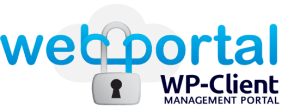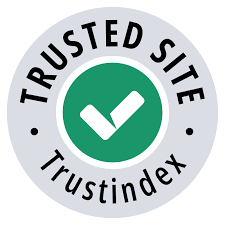CEO In Training
Executive Summary Video

The Appleton Greene Corporate Training Program (CTP) for CEO In Training is provided by Mr. Pickens MBA BA Certified Learning Provider (CLP). Program Specifications: Monthly cost USD$2,500.00; Monthly Workshops 6 hours; Monthly Support 4 hours; Program Duration 12 months; Program orders subject to ongoing availability.

Personal Profile
Mr. Pickens is a Certified Learning Provider (CLP) at Appleton Greene with extensive experience in finance, management and operations. He received his Master’s in Business Administration (MBA) with a concentration in finance from the Columbia University Graduate School of Business and a Bachelor of Arts in Business Administration from The College of William & Mary.
Mr. Pickens is a seasoned business executive with over 35 years of experience as a Chief Financial Officer, Chief Operating Officer and board member. He has implemented, strengthened and lead the operating and financial functions for companies engaged in investment management, real estate, business services, consumer products, food production and hospitality in the United States, Mexico and Canada. He possesses a comprehensive knowledge across all corporate finance, budgeting, accounting, audit, tax and financial reporting functions. He also has extensive experience in structuring and closing equity, debt, merger, acquisition and lease transactions.
Mr. Pickens is extremely experienced at developing budgets, business plans and financial models; raising capital from both angels and institutions; recruiting and managing teams as large as 240; and implementing robust financial, operating & accounting systems. His experience managing the operations of an apple processing company producing frozen sliced apples for the baking industry with customers including Conagra, Mrs. Smiths, Nestles and Sara Lee formed the basis for the simulation aspect of the CEO in Training Program.
To request further information about Mr. Pickens through Appleton Greene, please Click Here.
(CLP) Programs
Appleton Greene corporate training programs are all process-driven. They are used as vehicles to implement tangible business processes within clients’ organizations, together with training, support and facilitation during the use of these processes. Corporate training programs are therefore implemented over a sustainable period of time, that is to say, between 1 year (incorporating 12 monthly workshops), and 4 years (incorporating 48 monthly workshops). Your program information guide will specify how long each program takes to complete. Each monthly workshop takes 6 hours to implement and can be undertaken either on the client’s premises, an Appleton Greene serviced office, or online via the internet. This enables clients to implement each part of their business process, before moving onto the next stage of the program and enables employees to plan their study time around their current work commitments. The result is far greater program benefit, over a more sustainable period of time and a significantly improved return on investment.
Appleton Greene uses standard and bespoke corporate training programs as vessels to transfer business process improvement knowledge into the heart of our clients’ organizations. Each individual program focuses upon the implementation of a specific business process, which enables clients to easily quantify their return on investment. There are hundreds of established Appleton Greene corporate training products now available to clients within customer services, e-business, finance, globalization, human resources, information technology, legal, management, marketing and production. It does not matter whether a client’s employees are located within one office, or an unlimited number of international offices, we can still bring them together to learn and implement specific business processes collectively. Our approach to global localization enables us to provide clients with a truly international service with that all important personal touch. Appleton Greene corporate training programs can be provided virtually or locally and they are all unique in that they individually focus upon a specific business function. All (CLP) programs are implemented over a sustainable period of time, usually between 1-4 years, incorporating 12-48 monthly workshops and professional support is consistently provided during this time by qualified learning providers and where appropriate, by Accredited Consultants.
Executive summary
CEO In Training
Developing talented managers from within the ranks of an organization is critical to its future success and sustainability. Managers can emerge from any functional area and usually have exposure and expertise in the area they happen to originate from whether it be production, operations, administration, marketing or finance. They usually do not have exposure to all areas of the company. Effective and interesting training programs to round out their backgrounds are hard to find. Programs that expect you to fall backwards in the hopes your colleagues will catch you may be interesting team building experiences, but they don’t prepare candidates for the rigors of managing a division or leading an entire company.
The CEO in Training Program creates a gamified simulation offering participants the opportunity to manage and have responsibility for every aspect of a company operating in a highly competitive industry. In this case, that industry is the frozen sliced apple industry. The task is to lead one of six apple processing companies, located in varying apple producing regions across the country, through a single processing season, from the September harvest, through the production season, to the end of the contract period. This 12-month period is known as “The Pack.”
The frozen sliced apple industry is a mature, seasonal, high capital, low margin and highly competitive industry. Executives participating in the simulation must quickly learn the industry and its metrics, design a processing facility, fund it through a combination of debt and equity, bid against each other to purchase raw apples from regional markets around the country, determine their finished product cost, develop a staffing plan, set compensation levels, schedule production, manage inventory, and bid against other players for customer contracts. Apple growers, (the suppliers) sell their crops to the highest bidders and large food companies like Conagra, Mrs. Smiths, Nestles and Sara Lee, (the customers) fulfill their frozen sliced apple needs by executing purchase contracts with a select few low bidders. Not every processor will receive apples from each region, and nor will they receive a contract with every customer. This makes management information and the pricing decisions it supports, of critical importance. As the program progresses, random variables affecting regional crop size, apple yield and customer demand will force additional analysis and decision making to optimize company results. Once the raw apple and customer contracts are committed, each processor will negotiate with their competitors to utilize excess production capacity and sell off excess apples and/or excess customer contract obligations. At the end of the program, the processor with the highest calculated ROE will be deemed the winner.
As the program progresses, participants also receive practical instruction in a range of general business topics typically related to each phase of the simulation. Topics will include macroeconomics, capital budgeting and formation, costing methods, interest rate construction, risk analysis, sales forecasting techniques, the time value of money, net present value and IRR calculations, ratio analysis, the business cycle and a general overview of bankruptcy. Some topics may be review for certain participants, while for others this may be their first exposure to many of these topics since managers within organizations rise from varying areas of the company with diverse educational backgrounds and experience.
During each phase of the program, participants will also receive instruction and assignments related to developing a fully integrated financial model including a projected income statement, balance sheet, cash flow statement and their related revenue, cost and balance sheet drivers. A review of basic accounting principles will also prepare each participant to create, read and understand financial statements and the stories they tell.
At the end of the program, each participant will have received a broad exposure to a wide range of business topics, become proficient in developing a fully integrated financial model, and have managed all aspects of a company through a complete 12 month season in the frozen sliced apple industry. Each CEO in Training participant will have full decision-making authority for their organization. Based on their ability to problem solve and think strategically, they will have a unique, realistic opportunity to step into the role of CEO with the potential for the success or failure that comes with it.
Curriculum
CEO In Training – Part 1- Year 1
- Part 1 Month 1 Introduction/Background
- Part 1 Month 2 Macroeconomics/Markets
- Part 1 Month 3 Capital Budgeting
- Part 1 Month 4 Staffing Plan
- Part 1 Month 5 Product Costing
- Part 1 Month 6 Capital Stack
- Part 1 Month 7 Risk Analysis
- Part 1 Month 8 Breakeven Analysis
- Part 1 Month 9 Sales Forecasting
- Part 1 Month 10 Financial Analysis
- Part 1 Month 11 Business Cycle
- Part 1 Month 12 Program Review
Program Objectives
The following list represents the Key Program Objectives (KPO) for the Appleton Greene CEO In Training corporate training program.
CEO In Training- Part 1- Year 1
- Part 1 Month 1 Introduction/Background – The primary objectives of session 1 are 1) get the participants up to speed on the apple industry and 2) begin developing the skills and knowledge required to manage an apple processing company in this highly competitive industry. One measurement of a participant’s success will be their Return on Equity as calculated at the end of the program. How well they do will hinge in large part on the many management decisions they make as they build and operate their apple processing company. In the first session, participants will receive an overview of the program and the apple industry simulation. Each subsequent session will begin with a discussion of the previous session’s assignment and a review of the prior session’s lecture topics. Participants will also have another opportunity to discuss the apple industry case materials with the Certified Learning Provider. The lecture topics for session 1 will include the concept of limited liability; the various types of entities (C-corporation, S-corporations, Limited Liability Companies and partnerships), and the tax implications of each. Next the group will review the general framework of an integrated financial model including the interplay between the projected income statement, balance sheet, cash flow statement and their respective drivers and assumptions. The simulation topics for session 1 will include assigning one simulation apple processing company to each participant and reviewing how random factors such as weather and changes to customer demand will impact various aspects of the simulation. The simulation assignment due prior to session 2 will require each participant give their company a name and reread “The Pack” simulation case materials with the benefit of the information they have received in session 1.
- Part 1 Month 2 Macroeconomics/Markets – The primary objectives of Session 2 are 1) familiarize the participants with the frozen apple market including the key players, their geographic locations, and the major product lines; 2) make participants aware of the critical systemic issues that impact the industry and 3) provide participants with a general understanding of basic macroeconomic concepts. After reviewing the assignments and lecture topics from session 1, participants will submit their company names and will again have a chance to review/discuss the apple industry case materials, the program overview and the apple industry simulation. The lecture topics for sessions 2 will be comprised of general macroeconomic concepts including GDP, GNP, supply and demand, and a high-level overview of the interplay between the three major segments of the economy; consumers, business and the government. In preparation for developing the financial model, participants will receive a general review of basic accounting principles. The simulation topic for session 2 will include a review of the frozen apple market, the key players, their locations; the major product lines; and the major issues that affect the industry and require consideration during the simulation. The assignment due for session 3 requires each participant to develop a customer/supplier matrix from the case materials provided which will be used later to support the supplier and customer bidding process.
- Part 1 Month 3 Capital Budgeting – The primary objectives in session 3 are 1) familiarize participants with the infrastructure required to produce and store frozen sliced apples and 2) provide participants with a general understanding of how to develop a capital asset budget, depreciation methods and requirements to optimize a production facility for maximize throughput. Following a review of the prior sessions lecture topic and simulation assignment, the lecture topics to be covered will include capital asset budgeting, depreciation methods and throughput optimization. The area of focus for the integrated financial model will be the projected income statement and its respective revenue and expense drivers and assumptions. The simulation topic will cover the various equipment required to construct and operate an apple processing facility including useful purpose, capacity, cost, useful life, space requirements, staffing needs and financing parameters. The simulation assignment will require each participant to design a processing facility with a target maximum capacity based on their expected customer/supplier matrix and general market information provided in the case materials.
- Part 1 Month 4 Staffing Plan – The primary goal of session 4 is to expose participants to the many issues that arise while managing “human” capital. Employees are the key to any organization’s success. They are also the source of many issues and often require creative solutions to keep the organization headed in the right direction. Participants will also receive an overview of payroll and HR related issues including a discussion of ethical matters that arise while operating a business with many employees. Following a review of capital budgeting, depreciation methods and plant optimization, the lecture topics will include the ins and outs of payroll processing, setting compensation levels, and the wage theory that purports 90%+ of all business costs can be traced back to labor/wages and why this is important. The financial model portion will cover the general framework for the projected balance sheet and its respective asset, liability and equity drivers and assumptions. The simulation topic will include a discussion of the staffing requirements for the simulation companies and questions regarding the development of the staffing plan including wages, bonuses, incentive plans, payroll taxes, benefits, pay cycle, etc. The simulation assignment requires each participant to develop a staffing plan based on 1) the plant and equipment staffing requirements and 2) the administrative staffing framework provided. This first round of compensation setting will form the basis for a discussion in the next session regarding compensation for all levels of employees in the organization.
- Part 1 Month 5 Product Costing – The primary objective of session 5 is to expose participants to the methods and issues arising when developing a product costing standard. This exercise will become a critical element to preparing bids for raw apples and customer contracts later in the program. Following a review of payroll issues and staffing requirements for the simulation companies, the lecture topics will include a discussion of the various methods for allocating direct and indirect costs of products/services. Areas of focus will include Job Costing, Process Costing, Direct Costing and Throughput Costing. An examination of Throughput Analysis and Constraint Management will aide in the optimization of the product costing cycle. The integrated financial model portion will include a review of the general framework for the projected cash flow statement; its interaction with the other financial statements, the impact changes to asset and liability accounts have on cash and the components to include in the calculation of working capital for operations vs investment or financing. The simulation topic in this session will include the discussion of all the direct and indirect components included in the production of frozen sliced apples as outlined in the case, including raw apples, yields, byproducts, ingredients, packaging, labor, utilities, freight and storage of raw apples and frozen fruit. The assignment requires each participant to develop a cost matrix for a single unit of frozen sliced apples including all inputs identified in the case and discussed during the session. The matrix will be dynamic to adjust for varying levels of throughput required depending on the quantity of raw apples ultimately acquired and customer contracts awarded.
- Part 1 Month 6 Capital Stack – The primary objective of session 6 is 1) expose participants to the methodology for constructing interest rates and 2) the types of debt and equity available to finance the purchase of fixed assets and fund working capital for their simulation companies. Following a review of product costing methods, this session’s lecture topics will include a discussion of the construction of interest rates, the Fisher model, bond math and the yield curve. Participants will also review the various types of financing available to complete their capital stacks required to fund a production facility including capital vs. operating leases. For their integrated financial model, participants will receive instruction on the general framework for the various financing sources covered in the lecture and how to model them. The simulation topic for this session will include a discussion of the specific capital requirements needed to complete the funding of the simulation company balance sheet including inventory revolvers, equipment loans and leases, bank lines of credit and mortgages for real estate assets. The assignment will require each participant to develop the loan schedules needed to fund the formation of their business, with the remaining capital required to be funded with equity. They will also link the funding and amortization schedules into their balance sheet and cash flow statements and the interest charges into their projected income statements.
- Part 1 Month 7 Risk Analysis – The primary objectives of session 7 include 1) preparing participants to submit their Price Sheets (bids) to purchase raw apples from the grower community in each apple growing region; 2) expose them to the various types of risk and methods to measure it, and 3) prepare participants to update their integrated model with last year’s data included in the case provided. Following a review of interest rate construction and funding options, the lecture topics will include a discussion of the various types of risk and how risk is measured. The integrated financial model portion will cover the necessary steps to update the model with last year’s apple crop and customer contract demand data. This will constitute a dry run to ensure all participant’s models are constructed properly and achieving identical results. Later, participants will update their models with their own current year’s data based on their individual bids for raw apples and customer contracts. The simulation topic will cover the apple bidding process and the effect random variables including frost, wind, bees, drought, rain, and rot may have on their bidding strategies. The assignment requires each participant to submit their raw apple bids for each of the six apple producing regions. Only the top five of the six bids in each region will be awarded apples based on a declining percentage scale of 30%, 25%, 20%, 15% and 10%, respectively. In each region, the processing company offering the lowest average price will receive zero apples from that region. Participants will also update their integrated model with last year’s crop and customer demand data to ensure the model is complete and working properly.
- Part 1 Month 8 Breakeven Analysis – The primary objectives of session 8 are 1) prepare participants to evaluate fixed vs. variable costs and 2) review the key elements to performing breakeven analysis. Instruct participants how to determine and submit their production schedules for their simulation companies. Following a review of the various types of risk and how risk is measured and mitigated, the lecture topics will include a discussion of fixed vs. variable costs and the key elements to performing breakeven analysis. The updated financial model will be used to perform a breakeven analysis using each participants’ plant design and apple bid results. This will aide in developing customer contract bids later in the program. The simulation topic includes a discussion of the finished product bidding process and the considerations that freight costs, yield, storage and byproduct revenue may have on the development of the customer contract bids. The assignment requires each participant to submit a production schedule and an analysis of the impact that apple yield, inventory build, storage costs and by product revenue’s will have on their ultimate results.
- Part 1 Month 9 Sales Forecasting – The primary objective of session 9 is to familiarize participants with sales forecasting techniques, both qualitative and quantitative in nature. Participants will also be instructed on how to develop and submit their customer contract bids. Following a review of production and the impact production costs, inventory management, storage costs and by product revenue have on performance, the lecture topic will focus on sales forecasting using both qualitative and quantitative techniques. The financial model will be updated to calculate profitability using this year’s raw apple cost based on the grower commitments and projected finished apple contract bids. The simulation topic will include inventory management and its related storage and financing costs. The assignment requires each participant to submit their customer bids and their updated model based on their expected contract bidding results.
- Part 1 Month 10 Financial Analysis – The primary objectives of session 10 are 1) familiarize participants with the concept of time value of money and business valuation and 2) instruct them on the parameters for handling excess inventory and customer contracts in search of optimal operating results. Following a review of the awarding of customer contract bids, forecasting techniques and the updating of the models based on projected contract bidding results, the lecture topics will include the time value of money, net present value, IRR calculation and business valuation techniques. Participants will receive instruction on how to incorporate a valuation of their business into their model using net present value and IRR calculations. The simulation topics will include a discussion of strategies for reselling excess raw apples and customer contracts to maximize results as well as a review of the many real-life differences between the simulation and the actual management of an apple processing company. The assignment requires each participant to submit proposals to buy/sell excess apples or contract capacity and submission of an updated version of their model.
- Part 1 Month 11 Business Cycle – The primary objectives of session 11 are to familiarize participants with the business cycle, bankruptcy, and ratio analysis and prepare them to submit the final version of their financial model. Following a review of the time value of money, net present value, IRR calculation and business valuation, the lecture topics will cover bankruptcy, Chapter 7 & 11 and workouts. Additions to the integrated financial model will including a ratio analysis and ROA, ROI, ROE calculations. The simulation topic will discuss the final model and review the final return analysis form to be submitted for the final session. The assignment requires the participants to add the ratio analysis to the final model as well as prepare and submit their final return analysis form along with the final model.
- Part 1 Month 12 Program Review – The primary objectives of the final session include determining the results of the simulation and performing a detailed review and Q&A of every aspect of the program including lecture topics, the integrated model and the case simulation. Following a review of bankruptcy, Chapter 7 & 11, workouts, and ratio analysis; the lecture portion of the session will be dedicated to a summary review and discussion of all the lecture topics and answers to any related questions. The group will also review and discuss all aspects of the completed integrated financial model and any related questions. The simulation topic will include a discussion and Q&A regarding the simulation and serve as an opportunity to collect feedback from the participants regarding the program, its strengths and areas for improvement. The final assignment: each participant as a “CEO in Training” participant is encouraged to leverage this program to accelerate their journey towards a meaningful leadership role within their organization and possibly someday stepping into the ultimate leadership position of CEO.
Methodology
CEO In Training
The CEO in Training Program is designed to deliver a powerful, comprehensive learning experience across a wide range of topics using a case study simulation. In the case, each participant will take the role of CEO of an apple processing company from one of six apple producing regions across the country. Each participant will compete to manage their company to achieve the highest return on equity at the end of the 12-month production season known as “The Pack.” Participants will be provided with a comprehensive case study containing all the information and metrics they will need to:
1) Design a processing facility;
2) Fund it through a combination of debt and equity;
3) Bid against other participants to purchase raw apples from regions around the country;
4) Calculate finished product cost;
5) Develop a staffing plan and set compensation levels;
6) Schedule production;
7) Manage inventory, and;
8) Bid against other players for limited customer contracts.
Suppliers (apple growers) sell their crops to the highest bidders (only 5 out of 6 bidders will receive a portion of the apples from each region in declining amounts: 30% down to 10%). The customer, comprised of large food companies like Conagra, Mrs. Smiths, Nestles and Sara Lee, do not buy from every processor, making pricing decisions of paramount importance to ensure receipt of 1 of the 4 contracts awarded in each of the six regions. As the program progresses, random variables affecting regional crop size, apple yield and customer demand will force additional analysis and decision making to optimize company results. Once raw apple and customer contracts are committed, each participant will negotiate with their competitors to buy/sell excess apples and/or excess customer contract obligations. At the end of the program, the participant with the highest calculated ROE will be deemed the winner.
Each program session will include:
1) Review of the prior session assignment;
2) Review of the prior session lecture topic;
3) A new lecture topic related to the current phase of the simulation;
4) Detailed instruction on the development of an integrated financial model;
5) Review/discussion of a new section of “The Pack” simulation;
6) An assignment incorporating the current session’s lecture, modeling and simulation components which will be due prior to the next session.
Participants will also receive practical instruction on a range of business topics including macroeconomics, capital budgeting and formation, costing methods, interest rate construction, risk analysis, sales forecasting techniques, the time value of money, net present value and IRR calculations, ratio analysis, the business cycle and a general overview of bankruptcy.
At the conclusion of the CEO in Training program, participants will have gained invaluable experience across the operation of an entire company, instruction on how to develop and understand an integrated financial model and receive exposure to a wide range of practical business topics they can draw upon as they gain additional responsibility in the current and future executive positions.
Industries
This service is primarily available to the following industry sectors:
Manufacturing
Manufacturing represents over 10% of U.S. annual GDP and employs over 12 million Americans. Manufacturing is also critical to the U.S. economy due to the multiplier effect of over 2.5x that accrues to related industries including retail, transportation, and business services. According to the BLS, the U.S. had 12.69 million manufacturing jobs, which employs 7.9% of the workforce as of 2018.
While once the largest component of the U.S. economy, manufacturing has decreased as a percentage of GDP by almost 50% due to a range of factors. One of the biggest causes for the decline is the shift to a service-based economy with financial services, healthcare and hospitality/leisure activities garnering a larger portion of the consumer’s attention. A second cause for the decline is the integration of the global economy since the end of WWII. Newly rebuilt economies in Germany and Japan jumped started these two former adversaries and propelled them to global manufacturing prominence. Subsequently, countries in south east Asia including China, South Korea, Vietnam and India have garnered a larger portion of the global manufacturing and export markets. In 2010, China became the global leader in manufacturing. The passage of NAFTA in the mid 1990’s made it easier for Mexico to compete with the U.S. in the manufacturing arena.
Another contributor to the decline of U.S. manufacturing is the high standard of living enjoyed by its citizens which results in much higher labor costs here as opposed to other countries. Higher workplace and environmental standards and relatively high corporate income tax rates also add to the competitive barriers faced by U.S. manufacturers. Finally, as the reserve currency of the world and the recipient of substantial global investment, the U.S. dollar remains relatively strong causing U.S exports face the additional hurdle of being more costly than many of our competitors.
Rising wages in emerging countries, energy self-sufficiency, and increases in productivity through automation and other technological advancements will allow the U.S to remain a global leader in manufacturing. That said, the landscape will continue to change, and market participants will need to develop savvy, experienced executives throughout their ranks if they are to maintain their global leadership.
Food & Beverage
Food is a necessity so while overall demand is steady throughout the economic cycle, competing for that demand can be extremely challenging. Food Processing is a mature industry that generates revenue from the sale of finished foods and ingredients to a range of customers from supermarket chains to institutional food service to restaurant, both sole proprietorships and larger chains. Distribution occurs both locally, regionally and nationally through frozen, refrigerated and ambient temperature channels.
Strong branding, strategic positioning, correctly identifying trends and re-formulating as needed are key elements to continued success. Expansion into new geographic markets can also be a key to growth along with consumer adoption of regional cuisines and shifting tastes. The explosive growth in demand for avocados due to their perception as the “healthy” fat, the growth of the Latino population within the U.S. and expansion of national restaurant chains like Chipotle is an example of a trend that impacts the food industry across many layers. While food demand is reasonably predictable, cyclical changes can present both opportunities and hurdles and companies with specific and significant exposure can get caught on either side of an emerging trend. The economic cycle can also cause financially constrained consumers to trade down within a specific sector, or shift buying habits towards more upscale products when times are good.
Food companies also reside within various levels of the “value add” spectrum. Commodity-type producers have little individual influence over product pricing, and are susceptible to the impact of weather-related issues, both good and bad, as well as trade issues including tariffs. Seasonality is often an issue as well. Further down the supply chain, innovation and branding can mitigate competition and generate some degree of pricing power.
Food production operations tend to require high fixed capital investment and while input costs can fluctuate substantially with the market regardless of whether consumer prices or demand is keeping pace. History, margin pressure can also result from increases in cost for the electricity and fuel used to power processing plants and distribute goods to the retail trade. Again, value-added producers with strong brands, further down the supply chain can much more easily pass along higher expense to their customers.
In general, food production is a difficult business and executives in this sector tend to have many years of experience. The jump from local or regional supplier to national distributor requires an experienced team making the development of midlevel executives into seasoned leaders of critical important.
Consumer Goods
Manufacturers of consumer goods are usually categorized as conglomerates controlling many brand-name, generic and private-label products. This industry is mature, and sales remain relatively steady throughout the business cycle as these products are viewed as necessities that are consumed on a regular basis. That said, the economic cycle may cause consumers to shift up or down the price/quality scale depending on the economic backdrop.
Innovation is one means by which consumer products companies can upgrade or expand product lines. They may also try to upgrade existing offerings by developing related items or enhancing packaging. Research and development budgets typically represent a small percentage of revenue but can provide an outsized boost to the overall organization. And while Branded products represent the largest share of total sales, private labeling for retail chains is an important component of overall operations.
Large consumer products companies are also known for their activities in acquisitions and divestitures. Their management teams seek to acquire small product lines that complement existing brands and increase sales volumes through their expansive sales channels. Since management is focused on the most profitable products, underperforming products are often spun off. Creating economies of scale through consolidation is also more easily achieved if the management teams are well-trained and able to take on these additional product lines or remain part of management for the many spin-offs. Global expansion also offers significant opportunity for U.S.-based companies to increase their top and bottom lines. While large, developed markets are the most attractive, developing regions often hold greater growth potential and a significant overseas presence can reduce overall operating uncertainty.
Within these organizations there is a never-ending need for well-trained, experienced managers since well-run manufacturing facilities help to reduce overall operating costs. Given that consumer products within a conglomerate often operate almost as mini companies unto themselves, the need for numerous experienced management teams becomes even more essential.
Electronics
Electrical Equipment manufacturing is a highly diversified industry producing electrical motors, commercial and industrial lighting fixtures, heating, and ventilation/air conditioning systems for a diverse customer base. This industry is quite sensitive to the global macroeconomic cycle as well as fluctuations in the price of raw materials including copper, aluminum and steel used to manufacture their products.
Equipment companies primarily serve mature, industrialized while global expansion can mitigate the effects of the business cycle. These companies require experienced management teams with specialized knowledge so developing capable leaders from within is critically important as the supply chain and distribution networks are far reaching. These companies have also begun to establish more overseas operations in order to better serve local markets economically and mitigate the impact of foreign exchange.
Operating results typically track the broad economic cycle with customers expanding their capital budgets and spending on electrical equipment in upcycles and delaying or cancelling investments during periods of slower economic growth. When customers reduce equipment orders, they often will try to extend the useful life of existing equipment if possible, through increased repairs. Since electronic equipment purchases typically reside within the capital budgeting process, they offer long lead times and are often the first form of purchase to be tabled.
Plant utilization and product quality are key to enabling these companies to drive demand, price and profitability. Operating efficiency is crucial for these companies to succeed given that typical operating margin in the sector range from 10% to 20%. These companies rely heavily on efficiency and cost-reduction methods including Six Sigma and Lean Manufacturing as well as hedging strategies to smooth prices for raw materials. R&D is typically a small portion of sales and management needs to be operationally savvy in order to keep up or stay ahead of the competition.
M&A activity is significant in this industry since scale is an important key to profitability. Most players in the sector are quite large and rely on seasoned management teams to leverage new products, markets operating synergies.
Aerospace
The Aerospace/Defense Industry is largely comprised of the production, sale, and service of commercial aircraft, military weapons and systems, and satellites for both military and commercial use. With a smaller number of well-known companies in this sector, there are thousands of subcontractors providing specific manufactured products to these massive corporate leads.
Most commercial aircraft are sold to the world’s large airlines with companies based in the United States usually providing the largest market for commercial aircraft. Foreign airlines have however grown to become a major source of demand as well. The U.S. military is the largest market for defense equipment, systems, and services in the world as American defense spending is by far the largest by any country. The companies included in this sector not only serve America’s demand, but also supply many U.S. allies.
The market for aircraft and military equipment and systems is cyclical in nature but due to long lead times for R&D, design and manufacture, existing contracts can last for many years. In the past, the demand for new orders might surge for several years, only to experience a sharp decline resulting in canceled or postponed orders as the cycle shifts.
The market for weaponry has its own cycle. During war time, defense spending rises rapidly, with expenditures on procurement and R&D increase significantly. During peace time, spending on defense may flatten or even experience an actual decline. Given that the amount spent on the military is a decision made by the political party in power, this to can impact the level of government resources available to this sector. All that said, military spending has historically run in the range of 3%-4% of Gross Domestic Product. However, during wartime this number can increase to over 10%.
The most important programs in the industry will be awarded to companies in this industry tend to be very large and the lead contractors on such programs must therefore also be very sizable, with substantial financial resources and human capital to see these long term projects through to completion. In fact, this applies both to the defense and commercial segments of this group. As evidence, there are currently only two major suppliers of large jetliners in the west, Boeing in the United States and Airbus in Europe. The number of players in the defense industry has also shrunk, with many well-known companies absorbed through acquisitions. There are however many subcontractors in the segment supporting even more subcontractors beneath them. At all levels, well trained, experience management teams are necessary to ensure the effective implementation of and delivery on these important, long term contracts.
Locations
This service is primarily available within the following locations:

New York NY
The greater New York metropolitan area has over 18 million inhabitants and is headquarters to over 110 Fortune 1000 companies. It is the single largest regional economy in the United States. New York City is the top center for finance, media, communications and professional services and one of the largest technology hubs in the country. The NYC metro area is also a major manufacturing hub, with apparel and food production leading the way, including thousands of manufacturing companies located across the Hudson river in neighboring New Jersey. New Jersey is also home to the Port of New York & New Jersey, which is the second busiest seaport in North America.
In every year since the great recession of 2008, NYC has grown almost twice as fast as the nation overall. The service sector added the most jobs with a 33% increase in accountants, lawyers, and bankers. Hospitality enjoyed a 50% increase in jobs with over half of them coming from the restaurant sector. Both healthcare and technology each added almost as many jobs as the leisure sector while the retail sector was one of the few to experience a slowdown.
In 2019, New York City venture backed companies raised in excess of $15 billion across a range of segments including e-commerce, financial services, media, big data and artificial intelligence. Not surprisingly, NYC is the home to many top tier colleges and universities and enjoys being one of the top destinations for college graduates from around the country.
Chicago IL
The greater Chicago metropolitan area is home to over 8 million inhabitants and is headquarters to over 60 Fortune 1000 companies. While personal and business services in the financial, legal, engineering, healthcare and hospitality sectors constitute a sizable portion of Chicago’s economic activity, manufacturing companies also make up a significant piece of the region’s economy. The manufacture of machine tools, construction and farm equipment make up a large portion of this segment with food, pharmaceutical and chemical production contributing substantially as well.
Chicago has more 4-year universities than any other city in the U.S. except Boston. These universities supply well educated young talent that fuels existing businesses as well as the startup community. Chicago also draws graduates from Midwestern universities in other states including Indiana, Michigan, Minnesota and Wisconsin. The lower cost of living in the Chicago area compared to a New York, Boston or San Francisco helps retain talent in the region. Startup opportunities in Chicago span across many industries and is especially strong in the fintech, food, healthcare, logistics, software, and general service industries. Capital is increasingly flowing into Chicago-based startups with 130 deals funded in 2017, totaling $1.7 billion.
Dallas TX
The greater Dallas/Fort Worth metropolitan area has over 5 million inhabitants and is headquarters to over 40 Fortune 1000 companies. While originally achieving prominence as a result of the oil & gas industry and its role as a major railroad hub, the Dallas/Fort Worth economy now rests squarely on the shoulders of technology, computer, semiconductor, fiberoptics and defense manufacturing. Business and financial services including commercial banking continue to expand in the region as well.
Since 2009, Texas, and Dallas in particular, has enjoyed a long economic expansion. The region has been a leader in both population and job growth since 2014. As a major energy center, oil prices can have an outsized impact on the state’s economic results. As a major focus for trade due to its expansive border with Mexico, Texas is also reliant on smooth trade which has existed since the passage of NAFTA and looks to remain stable with the recent passage of the USMCA. Low taxes and lessor regulation make Dallas and the surrounding area a highly desirable destination for US companies looking to relocated away from the high tax, high cost coastal economies. Venture funding is also a key element behind Texas claiming home to three of the top ten fastest growing major cities in the U.S. Venture funding surpassed $3 billion in 2018 and as the deals are getting larger, so are the companies they are helping to grow.

Philadelphia PA
The greater Philadelphia metropolitan area has over 6 million inhabitants and is headquarters to over 25 Fortune 1000 companies. Philadelphia’s relevant economic sectors include manufacturing, food processing, biotechnology, and telecommunications. Some of the larger Fortune 500 corporations in the area include food services companies Aramark and Crown Holdings, chemical manufacturers Rohm & Haas and FMC, pharma giants GlaxoSmithKline and Weyth, and defense contractor Lockheed Martin.
Philadelphia has enjoyed both economic and population growth is the recession of 2009. This is in stark contrast to the population declines witnessed over the prior four decades. The education level of the residents has also improved dramatically with over 30% benefitting from a college degree; over 45% for the 25-34 age group. These shifting dynamics provide a stronger labor pool for regional businesses and a boost to the local economy and community in general. Over the past five years, the greater Philadelphia MSA has seen venture funding of almost 1,000 companies. This has helped draw a younger, more highly educated demographic to the region, a trend that will feed upon itself.

Atlanta GA
The greater Atlanta metropolitan area has over 6 million inhabitants and is headquarters to 30 Fortune 1000 companies. The local economy generates over $400 billion in GDP, outpacing most other major cities/regions in the country. The state of Georgia has been ranked as one of the best places to do business by numerous national organizations and with the busiest airport in the world, Atlanta has become a leader in supply chain logistics and an epicenter for distribution facilities serving 75 destinations in over 50 countries. Advance manufacturing is another pillar of the greater Atlanta economy featuring advancements in robotics and automation systems. FinTech and healthcare technology are two additional major components of the Atlanta economy.
Atlanta’s leadership is focusing on helping its middle market companies to accelerate growth and fuel innovation. These initiatives are focused on helping the area to produce new technologies, products, and enhanced processes. Innovation is seen as the key element to growing businesses and ensuring Atlanta and the region remain competitive and prosperous. Atlanta’s venture capital community completed over 150 deals in 2019, investing almost $1.8 billion in Atlanta area companies.
Program Benefits
Management
- Improved information
- Clear goal-setting
- Strategic planning
- Strategic alignment
- Process improvement
- Performance improvement
- Risk reduction
- Decentralization
- Learning organization
- Business cadence
Finance
- Enhanced visibility
- Cash planning
- Increased accountability
- Transparency
- Cost reduction
- Increased accuracy
- Continuous improvement
- Expedited reporting
- Shared vision
- Organizational insight
Opeerations
- Process improvement
- Process decentralization
- Employee ownership
- Logistics management
- Faster processes
- Project execution
- Performance analysis
- Accountability
- Cost effectiveness
- Clear metrics
Testimonials

Testimonial 1
Content here…

Testimonial 2
Content here…

Testimonial 3
Content here…

Testimonial 4
Content here…

Testimonial 5
Content here…
More detailed achievements, references and testimonials are confidentially available to clients upon request.
Client Telephone Conference (CTC)
If you have any questions or if you would like to arrange a Client Telephone Conference (CTC) to discuss this particular Unique Consulting Service Proposition (UCSP) in more detail, please CLICK HERE.


















